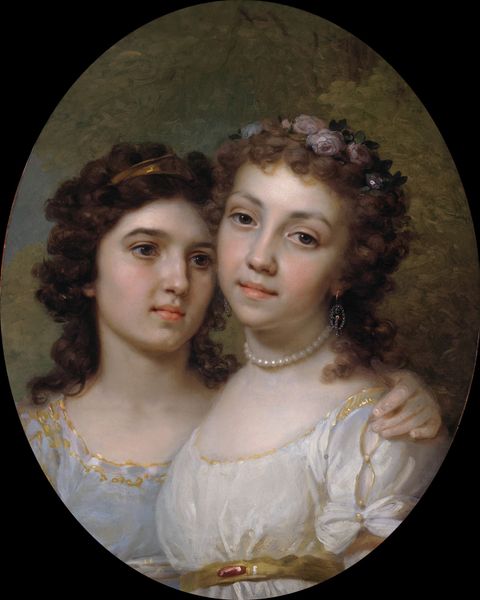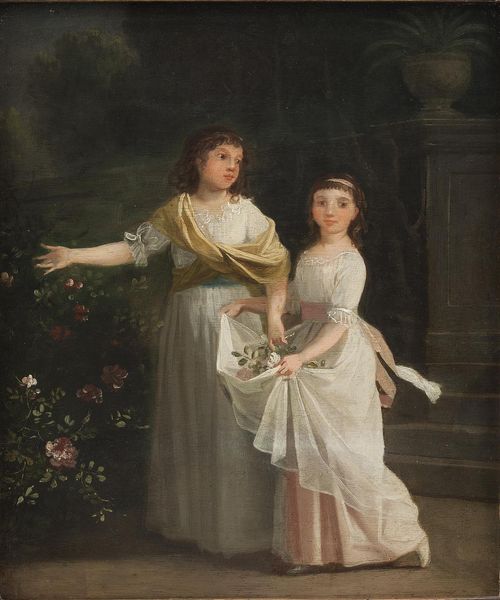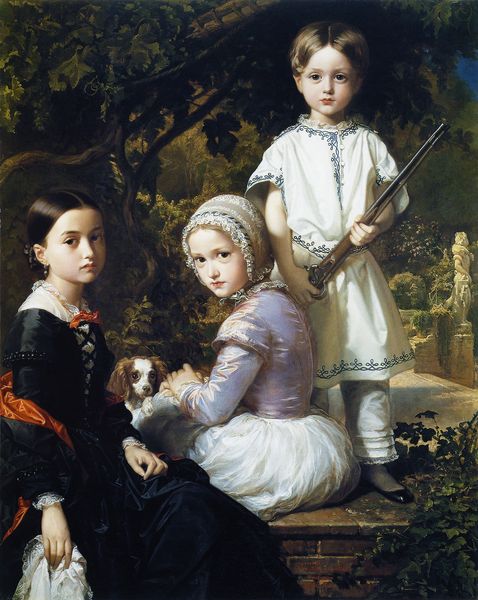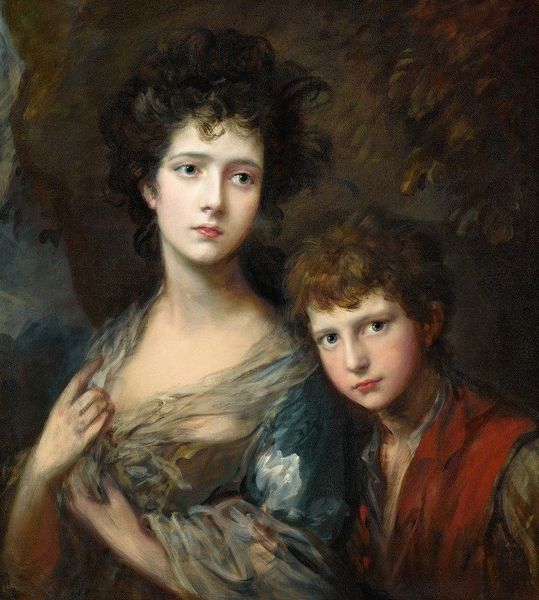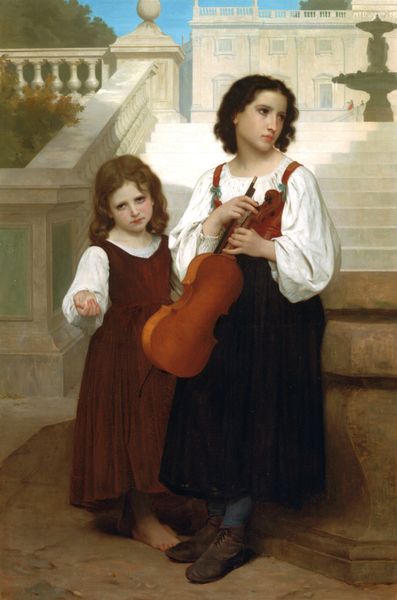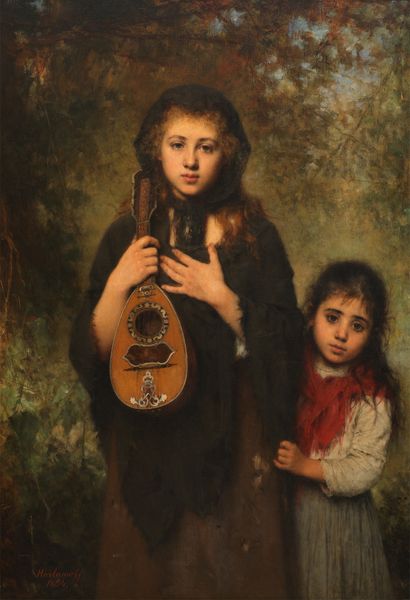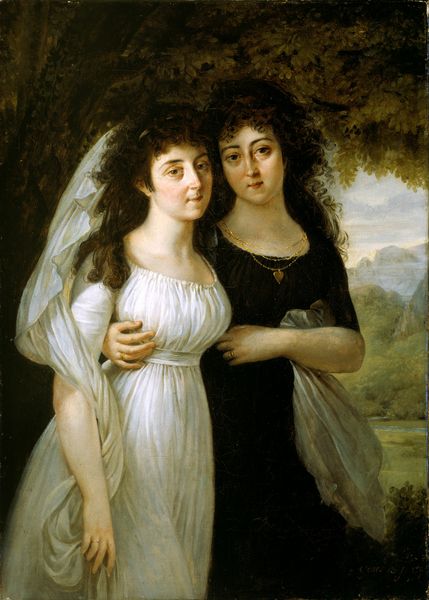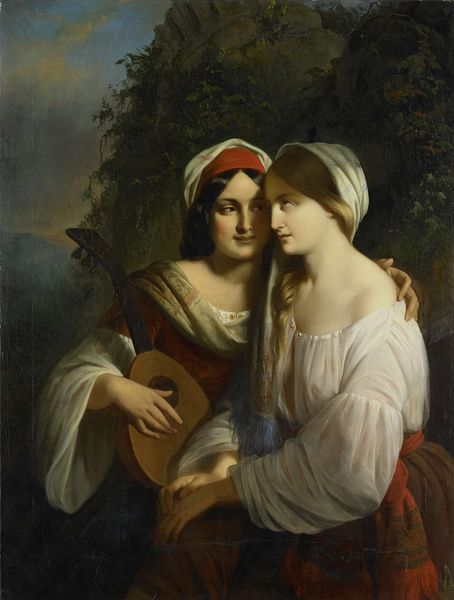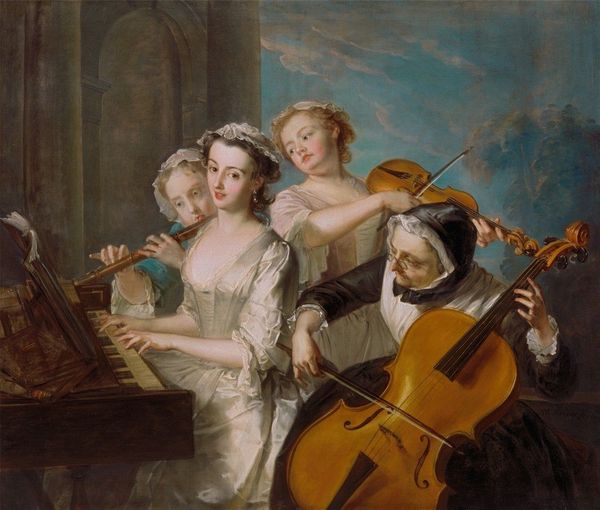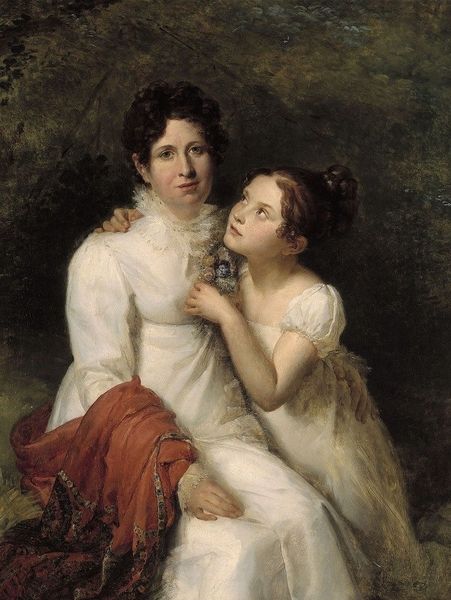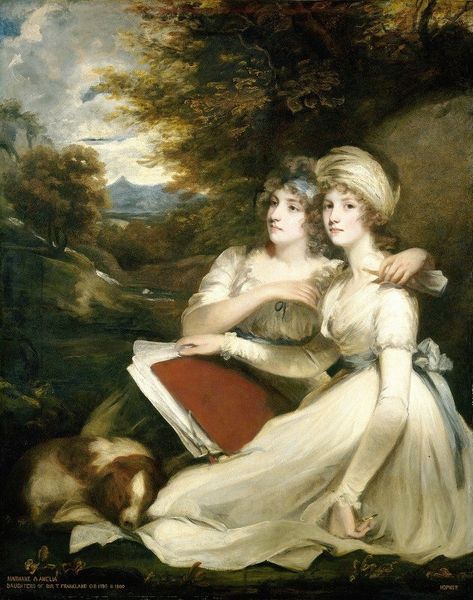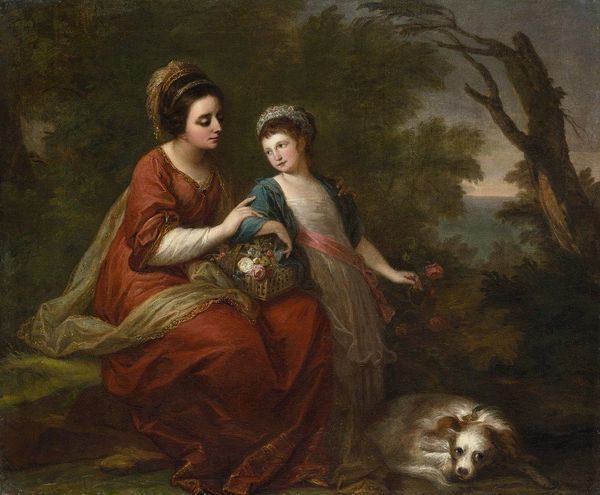
painting, oil-paint
#
portrait
#
painting
#
oil-paint
#
figuration
#
romanticism
#
genre-painting
#
female-portraits
Dimensions: 69.2 x 75 cm
Copyright: Public domain
Curator: This is Vladimir Borovikovsky's "Portrait of A. and V. Gagarin," painted in 1802, now residing in the Tretyakov Gallery in Moscow. Editor: My initial reaction is one of gentle tranquility. The soft light and muted palette lend the scene a calm and almost melancholic air. It’s very subtle. Curator: Absolutely. Borovikovsky was a key figure in the Russian Romantic movement, and his portraits often reflected the sentimental values of the aristocracy. Depicting young noblewomen with attributes such as musical instruments was used to construct an image of educated grace and refined leisure, highlighting their societal roles and status within that privileged class. Editor: The composition strikes me too. The artist uses a restricted range of tonal variation to unify forms through tonal modulations, note the harmony of greys in clothing against the slightly brighter instrument. How deliberate! Curator: Yes, there's a studied effort there. In this context, a painting such as this was a commodity. It spoke volumes about social and gender norms in Tsarist Russia and this painter tailored images accordingly for consumption. Consider how these images solidified ideas around beauty and status. Editor: But let's look closer, can't we see the gentle gradations in the fabric folds? Or the carefully rendered musical scores. Also, notice the asymmetrical design. One sister with dark hair is on the left and the other with lighter tones, and what appears to be an orchestral instrument peeks from behind her right shoulder to mirror the curve of her neck. It gives it movement! Curator: Well, of course! I can't disagree, the craft is well honed. I only highlight how images play their role in a culture. Borovikovsky elevated his patrons by casting them in an idyllic light, very aware of who would see them—reinforcing prevailing perceptions among Russia's elites. Editor: Agreed. But appreciating the painterly aspects only enriches how we interpret history. These figures, for instance, emerge from an interesting tension between a defined subject and the vagueness of the overall surrounding tones. That tension charges this romantic sensibility. Curator: A great insight and one which reveals the benefit of considering history through art like this. We can see a confluence of elements both aesthetic and societal. Editor: Indeed, appreciating Borovikovsky's mastery of the canvas helps to highlight further all the societal details embedded within, so apparent even two centuries later.
Comments
No comments
Be the first to comment and join the conversation on the ultimate creative platform.
